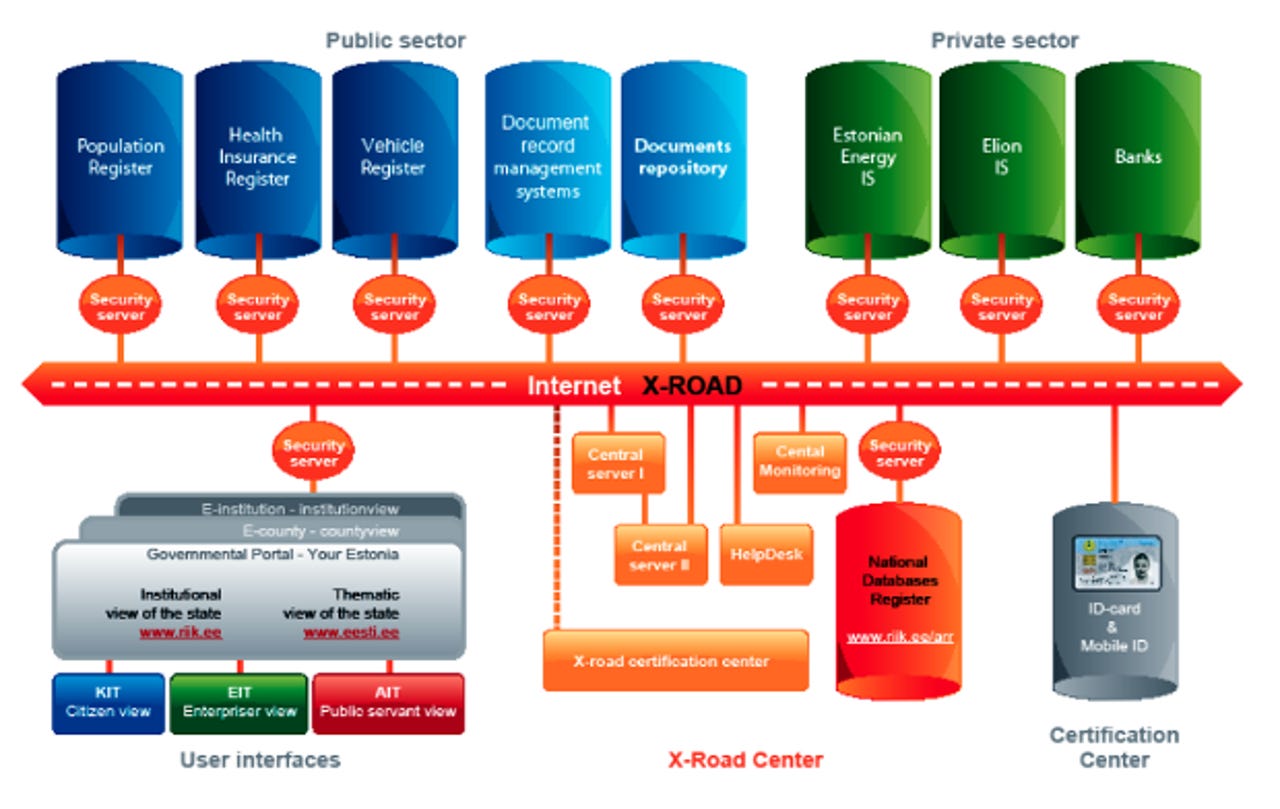How international IT harmony can start with just a bit of middleware


Finland is to start work on an online service channel and a digital ID system "without delay", as part of a new programme (PDF) revealed by the country's government recently.
The plan was first brought to wider public attention last week when Riku Jylhänkangas, the head of Finland's public sector ICT strategy, told the European State Portals event in Tallinn that Finland is going to study Estonia's own middleware layer X-Road in order to build its own system, which it hopes will improve public service delivery and cut costs.
X-Road, launched in Estonia in 2001, enables secure internet-based data exchange between government agencies' various IT systems, as well as giving individuals access to any of their data that is maintained and processed in public sector databases.
Both public and private sector organisations can connect their own IT systems with X-Road, for example, local banks can use X-Road's digital ID card to verify the identity of their customers.
Learning from X-Road
According to Pauli Kartano, ICT project manager at Finland's ministry of finance, the country's aim is to use as many components of X-Road as possible when building Finland's own data exchange layer, the Finnish National Service Bus.
"Some reconfiguring is to be expected due to the [two countries'] different ICT environments. The most important parts are the security servers and central server functionalities. The details are yet to be figured out," he said.
Jaan Priisalu, head of the Estonian Information Systems Authority (RIA), said that technologically it won't be technically difficult to copy Estonia's X-Road, but the legal and organisational side is another matter. "But we are more than willing to share our experiences with the Finns in these matters," he said.
The finance ministry's Kartano said that discussions around the data exchange layer have been going on for many years in Finland, with the government monitoring X-Road's progress in Estonia.
"In the past there has been talk of national data exchange layers, but they haven't materialised. There are several different data exchange systems in the Finnish public sector but now it seems that there is more powerful political push in that direction. In the past that kind of national view has been lacking," he said.
Having similar secure systems in both countries means that the countries can save on development costs and opens up the possibility of cross-border online services such as e-signatures or digital prescriptions – available in Estonia for many years.
"If and when both states are using similar systems, we could develop systems together so we would learn from each other and we could share the costs. When using the same system in separate instances and developing the system together, we could use all the features that the system can offer if necessary," Kartano said.
Lack of political will
The RIA's Priisalu highlighted that although the European directive which regulates digital signatures came into force thirteen years ago and Europe has been trying to implement cross-border online services, while the number of companies offering electronic ID products has also grown significantly, in practice, using e-signatures between different EU member states is still a rarity.
"The main question is which data exchange layer model will be chosen for the pan-European e-service space. If we get the cross-border e-services between Estonia and Finland to work, the X-Road model has a good chance of being implemented in other European countries as well," he said.
In order to get the cross-border online services to work, EU-members don't need to have the same IT systems, as they should be able to interconnect without problem, the finance ministry's Kartano said. The fact that services don't interoperate, however, is more down to a lack of the political will.
"If other countries were to join us it would be great, but it is also possible to connect different data exchange layers together. There are existing data exchange layers in other countries already and using e-services across the borders is probably more a political, organisational, [or] legislative issue than a technical one."
The RIA's Piirsalu said that although the negotiations with other countries haven't reached as far as they have with Finland, Estonian authorities are continuously working with other countries in the Baltic region to deploy the cross-border online services.
"For example — you can access and use the Estonian e-Business Register with a Lithuanian, Finnish, Belgian or Portuguese e-identity already today."
When Estonian digital signatures could also be accepted in Finland and vice versa is still too early to predict, but this goal has definitely been set in both countries.
"As we are still in the early stages with this co-operation, it is too early to give exact predictions, but we hope to see the first results already in 2014," Priisalu said.
Finland is also highly motivated to speed up the pace of co-operation. "The aim is to develop cross-border e-services and the e-signature would be a good example of such things. Time table is still open, but sooner the better," Kartano said.
The new initiative could also mark the first step towards stronger co-operation in ICT between Finland and Estonia, as the countries haven't worked together on a ICT project of such size before.
"Using X-Road, and co-operation in developing it in the future, could be a good first step in cooperation in the ICT sector [overall]. This kind of approach is new to us all so it is hard to say what could be done in future. But there is plenty of room to increase our co-operation, both in the public and private sector," Kartano said.